
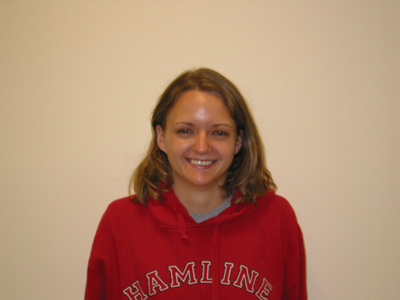
MRSEC Mentor: Michael Ward
The Design and Synthesis of Oligothiophene Substituted Semiconductors
The objective of this research project is the synthesis of organic molecules that will crystallize into packing motifs considered optimal for high performance in thin film field effect transistors (FETs). The primary synthetic targets will be oligothiophenes equipped with butyl carbamate substituents at the termini that serve as "molecular clamps" capable of optimizing p-p overlap of oligothiophene cores in the crystalline solid. Single crystals of these targets, grown by solution or vapor sublimation methods, will be characterized by single crystal X-ray diffraction to elucidate the role of the molecular clamps in crystal packing. Materials for mobility measurements will be identified based on important crystal attributes, including small interplanar separations between the oligothiophene cores and a propensity to form plate-like crystal habits that will naturally form thin film morphologies on the FET platform.
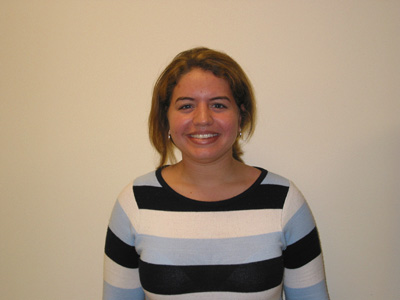
MRSEC Mentor: David Norris
Synthesis of Photoactive Ag Nanocrystals
Silver nanodots will be prepared through silver salt reduction and controlled through stabilizing organic self assembling monolayers (SAM's). The size of the nanodot is dictated by the concentration of SAM's and the optical properties will consequently depend on the specific size of the particle. These dots will then be encapsulated in phospholipid micelles in order to enable the dot to be hydrophilic in biological systems. While semiconductor nanocrystals have already been proven successful for in vivo biological labeling in lab animals, the toxic nature of the constituent elements would make the approval for human testing unlikely. The proposed method will use only benign components and would be more attractive for human applications.
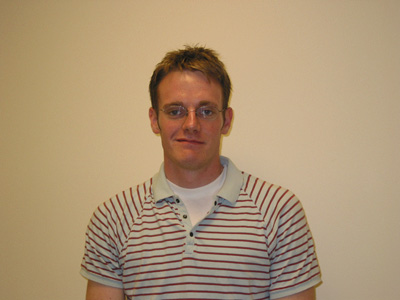
MRSEC Mentor: C. Daniel Frisbie
Optimization of thin film vacuum deposition techniques of Perylene tetra-carboxyl diimide (PTCDI) derivatives
Perylene tetra-carboxyl diimide (PTCDI) derivatives are n-type semiconducting materials that have been proposed for use in thin film semiconductor electronic devices including thin film transistors. The combination of stability and n-type semiconducting characteristics in organic compounds is rare in that most n-type organic semiconductor compounds are unstable in the presence of air and water. Optimum charge transport properties in PTCDI thin films are highly dependent upon crystal morphology of the thin films, which is in turn highly dependent upon the deposition parameters used during thin film growth. Such parameters include substrate temperature during deposition, deposition rate, film thickness, and substrate conditions. The purpose of this study is to optimize the thin film deposition parameters for the three new PTCDI derivatives for possible future use in thin film semiconductor devices. The thin film crystal morphology obtained from each set of deposition parameters used will be studied with atomic force microscopy and x-ray diffraction and deposition parameters will be altered as necessary to obtain optimum thin film crystal morphology for each compound.

MRSEC Mentor: Frank Bates
We propose to study the extrusion of blends of lamellar poly(cyclohexylethlyene) and poly(ethylene) containing triblock and pentablock copolymers. Shear flow was found to cause these polymers to form a macroscopic lamellar morphology with a single orientation that is dependent on the number of blocks. Furthermore, the pentablock displays superior mechanical properties, which we attribute to the formation of molecular bridging by physically linking adjacent lamellae together. In addition to the differences in orientation, extrusion of these polymers revealed glaring disparities between their optical and surface characteristics. Despite the identical chemical components of the two polymers, the triblock copolymer is optically clear with a relatively smooth surface, whereas the pentablock exhibits decreased optical clarity and undesirable periodic surface undulations when processed at high extrusion rates. In order to elucidate how molecular architecture brings about these differences, extruded blends of these two polymers will be characterized via SAXS, optical microscopy and profilometry.
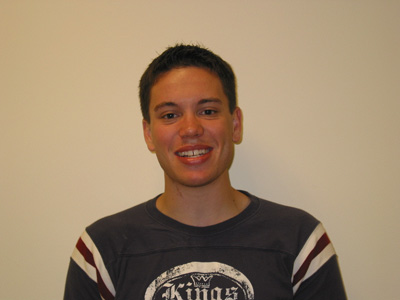
MRSEC Mentor: Kent Mann
Oligothiophenes as n-channel Semiconductors
Organic semiconductors offer an inexpensive alternative to currently used inorganic semiconductors, promising to be more easily processed, and flexible rather than brittle. Aromatic oligo- and poly(thiophene)s are efficient p-type semiconductors when oxidized to a quinoid radical cation or dication. When paired with electron rich termini the quinoid form can be made air stable - as in the example of dicyanomethylene-capped terthiophenes (DCMT). These easily reduced materials are being studied as n-type semiconductors. The importance of n-type semiconductors in creating diverse organic transistors and circuits, and the relative lack of such materials, makes DMCT materials potentially important. The goal of this research is to synthesize a series of DCMT derivatives, determine their crystal structures and electronic properties, and correlate their solid state structure with bulk electronic properties.

MRSEC Mentor: Paul Crowell
Spin Transport in Ferromagnet-Semiconductor Heterostructures
The controlled transfer of electric charge in semiconductor devices is a crucial part of modern technology, especially computing. Magnetism is also important to computing in the form of magnetic storage devices, which fundamentally use the spin of the electron to store data. Since spin is a property of all electrons, including the ones that carry charge in semiconductor devices, a new kind of transistor that utilizes spin as well as charge in computing is possible. The combination of spin and semiconductor electronics, called "spintronics," has some tantalizing possibilities. A semiconductor device sensitive to spin could utilize not only charge, but also superpositions of spin states in computing, allowing for a single carrier to carry far more information than before. This makes spintronics one of the candidates for developing a quantum computer. However, spins in ferromagnetic materials are usually aligned with each other. This is not the case in a semiconductor, where the spins of electrons do not align with each other. A major obstacle of spintronics is getting spin data into the semiconductor itself, and my research will focus on this problem on spin injection.
The spin injection device I will be studying is called a ferromagnet-Schottky spin LED (light-emitting diode). The LED is essentially a Schottky diode (formed by a junction between a metal and an n-doped semiconductor) placed back-to-back with a p-n diode (formed by the junction between the n-doped semiconductor and a p-doped semiconductor). Under sufficient voltage between the ferromagnet and n-doped semiconductor, electrons will cross the barrier between the ferromagnet and n-doped semiconductor, where they will then recombine with holes from the p-doped semiconductor in the quantum well between the two semiconductors and produce light. If the spins from the ferromagnet are transferred in the device, the emitted light should have some circular polarization. Previous experiments have shown this device to be a feasible candidate for spin transport; my main goal will be to find the optimum Schottky barrier and temperature conditions for spin data to be injected from the ferromagnet into the semiconductor. Previous data show that while spin can be transported, not all the spin injected is transmitted to the quantum well. One place that the spins from the ferromagnet could be lost is the Schottky barrier that the electrons initially cross to reach the p-n junction. The data necessary to understand how well spin injection is achieved in a system are fairly fundamental: electron transport properties like voltage and current, and spin transport data itself, which comes from the type of polarization that the light emitted from the quantum well has. The instruments needed to make these sorts of measurements are available in the lab. Use of electron transport properties current and voltage will be used to determine precisely the properties of the Schottky barrier and how many spin carriers should be reaching the quantum well; measurement of the circular polarization of the light emitted from the quantum well will show how many carriers from the ferromagnet actually have retained their spin through the time they recombine with holes. There are currently different designs of ferromagnet-Schottky spin LED (the samples are processed using molecular beam epitaxy done by a collaborating group, and samples are then used to make devices with photolithography). Another objective of my research is to test these different designs with their different Schottky barriers and find out which device best achieves spin injection. The effect of temperature on this system is also unknown - while intrinsic carrier capacities of semiconductors decrease as temperature is decreased, making the diode less effective, it is possible that spin-carrying electrons retain their spin better at lower temperatures. This possibility will be investigated by measuring the electronic and spin properties at different temperatures using a liquid helium flow cryostat to generate lower temperatures.
The result of these measurements will be a set of data from which conclusions about what factors are conducive to spin transport can be drawn. This will lead to a better understanding of the use of spin in semiconductor devices, contribute to the physics of spin in ferromagnet-semiconductor heterostructures, and help determine the ultimate feasibility of using spintronics to make a quantum computer.
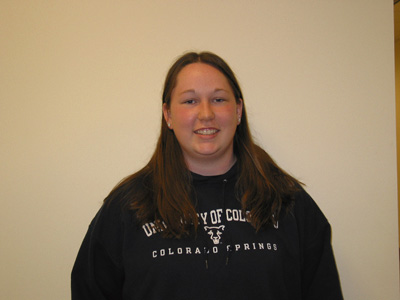
MRSEC Mentor: Chris Macosko
The Effects of Block Copolymers on the Range of Cocontinuity in Polystyrene/Polyethylene Polymer Blends
Different polymers are often blended, creating various multi-phase microstructures that can enhance the material properties of blend constituents. Microstructures can be droplet/matrix, lamellar, fibrillar or cocontinuous. A cocontinuous microstructure has interconnected phases that are continuous throughout the sample, much like a sponge where the sponge is one phase and air is the other. This structure can form when two polymers, in this case polystyrene and polyethylene, are mixed in certain ratios (usually around 50:50). The goal of my research is to determine what the addition of a 40 kg/mol di-block copolymer to a polystyrene/polyethylene blend will do to the range of ratios forming cocontinuous structures. Blending will be performed in a vertical twin screw extruder (DACA MicroCompounder), and then cocontinuity will be determined using primarily SEM and image analysis, as well as rheology and solvent extraction.

MRSEC Mentor: Chris Palmstrøm
Development of Free-standing Single Crystal Shape Memory Alloys For Use in Sensors
It is possible for shape memory alloys (SMAs) to function as sensors by translating mechanical movement into electrical signals. The movement of twins on the molecular scale due to disposition from external forces creates a change in electrical resistance, serving as a sensor (perhaps for force measurement).
The growth of the Ni2MnGa or Co2NiGa SMA is performed via molecular beam epitaxy on various substrates (GaAs, MgO). Each sample is then characterized by vibrating scanning magnetometry, x-ray diffraction and Rutherford backscattering spectrometry (for lattice parameter and compound determination, respectively), channeling (to examine the quality of crystallization), transmission electron microscopy, and reflection high energy electron diffraction. Due to the delicacy of the SMAs, they must remain free-standing. Hence post-growth processing is required in order to partially release SMA films from the substrate. In the past, backside etching has been utilized to construct a free-standing structure, although it proved costly, time-consuming, and difficult. Thus, the goal is to apply a new method of etching from the sides of the sample while allowing the alloy to hang from supports on the top. Techniques to develop the prototype after growth involve the mask design for the alloy and support shapes, photolithography, reactive ion etching, selective wet etching, and e-beam evaporation of Au to create contact pads. The group's end goal is to place the microsensors on the inner surface of a wind tunnel and measure shear stress via IV characteristic curves.
This project will utilize a combination of different substrates, alloys, and processing techniques to complete with a working, small effective prototype microsensor.
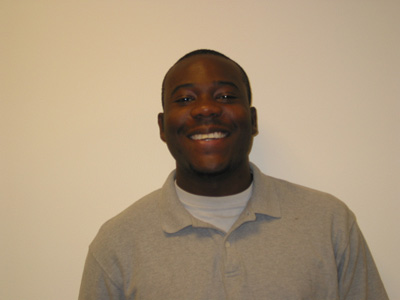
MRSEC Mentor: C. Daniel Frisbie
Fabrication and Analysis of N-Type organic semiconductors for the development of thin film transistors
The current focus in organic semiconductor technology has been based mostly on the p-type organic materials. Pentacene is commonly used as the organic semiconductor in organic thin film transistors (OTFTs). The use of n-type organic semiconductors has not been as widespread because of their instability at operating conditions. N-type organic semiconductors conduct electrons, and they would be beneficial in the production of p-n junctions, and complementary logic circuits. The summer research highlights on tests of seven different n-type semiconductors. N-type OTFTs are unstable because of the electron affinity of the carbanion. These organic compounds are based on the perylene group with different electron withdrawing groups. The research will consist of building OTFTs with these organic compounds, and characterizing them. The main characterization techniques include atomic force microscopy, x-ray diffraction and optical microscopy.
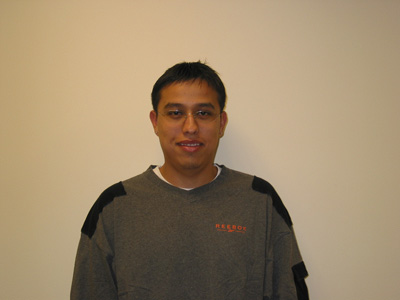
MRSEC Mentor: Victor Barocas
Studying electro-kinetic behavior of cells and protein solutions
We are studying how cells and proteins in solution behave when acted upon by electrical forces. Our hardware was fabricated using a photo-curable polymer. It has a channel of varying width with four pairs of metal electrodes across it at different points. The electrodes will be connected to an impedance analyzer - and we will look at how the impedance (AC resistance) varies with protein concentration at different frequencies. We shall also observe the behavior of cells when a DC voltage is applied across the electrodes.
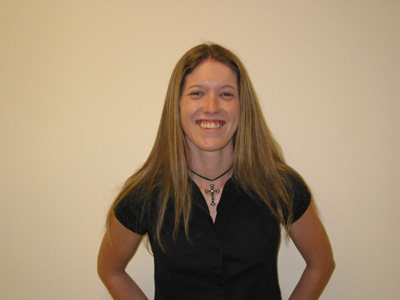
MRSEC Mentor: Michael Ward
Infinite Cyclic Networks by Molecular Design
This project describes the usage of charge assisted hydrogen bonding to direct the assembly of topologically complimentary hydrogen bond donors and acceptors into pre-ordained porous molecular networks. The porous hexagonal network will comprise select bis amidinium di-cations and a variety of polycyano anions, which capitalize on charge assisted hydrogen bonding. The cyclic networks will be examined to determine if interpenetration is feasible and whether guest molecules will frustrate interpenetration. Due to the well-defined directionality of hydrogen bonding, calculations of the pour sizes in the low density framework is permitted. The foundation of this work will provide insight as to how infinite cyclic networks might be used for hydrogen storage due to the restricted yet stabilized cavities of the host networks.
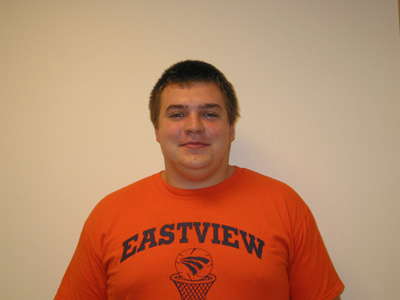
MRSEC Mentor: Chris Leighton
A Study in the Magnetic and Electrical Transport Properties of Pr1-xCaxCoO3
The magnetic and electrical transport properties of cobaltites make them an interesting research topic in the field of materials science. The particular cobaltite I will study is the Pr1-xCaxCoO3 composition, a compound that has yet to be thoroughly researched. Previous studies on the Pr0.5Ca0.5CoO3 composition have produced some interesting results. In order to better understand these results, I will be doing an extensive study of the compound with twelve different values for x ranging from 0 to 0.7. Samples of Pr1-xCaxCoO3 will be created using a conventional solid-state reaction method and analyzing them using x-ray diffraction, scanning electron microscopy, magnetometry, and other analysis devices.
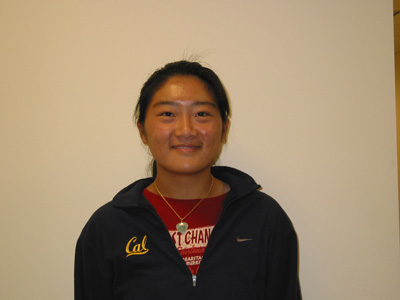
MRSEC Mentor: C. Daniel Frisbie
Production and Characterization of N-Type Organic Semiconducting Thin Films
We are interested in developing n-type organic semiconductors, namely three perylene derivatives, due to their desirable properties of low-cost, flexibility, and ease of processing. N-type organic semiconductors are atypical because electrons are unstable when exposed to oxygen. The study of these materials is valuable nonetheless because they are needed in the fabrication of p-n junctions and complementary logic circuits. In our research, we will optimize the growing parameters of the thin films of these materials. The films will then be characterized using atomic force microscopy and x-ray diffraction. The deposition process of thermal evaporation will be used to build field effect transistors with the organic films as the semiconducting layer. The transistor will finally be tested for the mobility of the electrons through the film. Our goal is to develop a film that will display both high mobility and air stability so that it could ultimately be used in electronic devices.
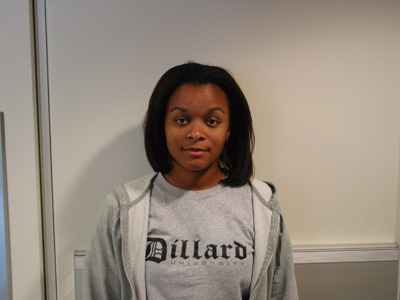
MRSEC Mentor: Victor Barocas
Settling of Large Spheres in a Small Rectangular Channel
Many previous studies of sphere settling have been carried out in infinite bodies of fluid, where the effects of walls or nearby particles are disregarded. For this study, the wall and the effects it has on the falling sphere are of importance. We have designed an apparatus to understand the wall effects on a falling particle in a confined channel. Solid spheres with diameters 0.11cm, 0.103 cm, 0.087cm, and 0.065 cm will be dropped into a 1.5 x 15.5 x 30.0 cm rectangular duct filled with a highly viscous fluid (125,000 cP silicone oil). Particle Image Velocimetry, a double-pulsed laser technique, will be used to map out the flow field around the particle over time. The experimental results will be compared to a computer simulation of the Stokes flow.
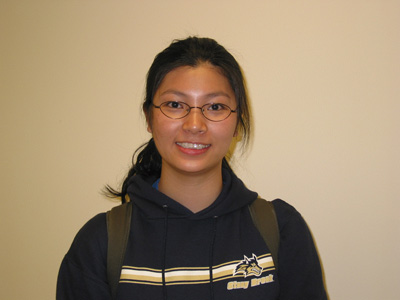
Home Institution: Penn State, Hazelton MRSEC Mentor: C. Daniel Frisbie
Synthesis of Tetra and Octa Cyano-p-pentacene Quino Di and Tetra-methane Derivatives Based on Pentacene Quinines
Our interest focuses on the synthesis of tetra and octa cyano-p-pentacene quino di and tetra methane molecules derived from the corresponding pentacene quinines. Pentacene is a well-known organic semiconductor. By attaching strong accepting groups, in this case two and four dicyano quino methane groups, the compounds are expected to behave as n-type semiconductors. Previous work in our group on thiophenes has shown that electron acceptor groups introduced would lower the lowest unoccupied molecular orbital (LUMO), therefore decreasing the band gap as well as increasing the possibility of pi stack formation in the solid state. Once the compounds are made, characterization, crystallization, single crystal structures, cyclic voltammetry of these molecules, as well as film growth will be attempted. We will follow well-established synthetic procedures to prepare these molecules.
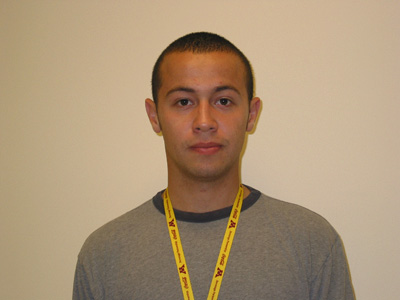
Home Institution: MRSEC Mentor: Michael Ward
Investigation of the Effect of Temperature on Liquid Crystals
The interest in liquid crystal research stems from its several applications such as switchable windows to understanding biological membranes. We will investigate the temperature dependent behavior of liquid crystals of Guanidiniumalkylbenzenesulfonates (GCnBS), in which alkyl chain length n ranges from 0-16 carbons, and some members of a series of Gunidiniumalkylphynylsulfonates (GCnBPS). We will use an optical microscope equipped with temperature controller and polarizer. This will allow us to change the domain size of liquid crystals by annealing and cooling. The previous studies from Ward's group reveal smectic phase A and lesser extent smectic phase C at elevated temperatures for n > 7.
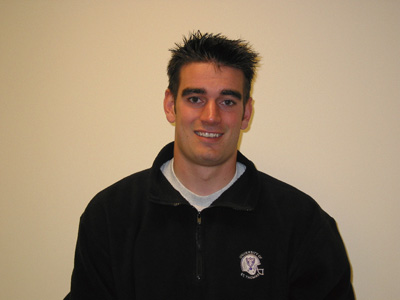
Home Institution: University of St. Thomas MRSEC Mentor: C. Daniel Frisbie
Development and Characterization of Au Nanoparticle Array employing a G-DNA Molecular Scaffold
Nanoparticles have become very important materials in the development of nanoscale devices. The ability to control the assembly of ordered Au nanoparticles is a huge step in the development of devices such as nanoscale circuitry. Nucleic acids, in particular B-DNA, have been used as molecular scaffolds for the positioning of nanoparticles. An alternative to B-DNA is the use of a simpler molecule, G-DNA. The ten base pair oligonucleotide GGGGTTGGGG (Tet1.5) is able to self assemble into higher order G-DNA tetramers known as G-wires. The Tet1.5 molecule has been synthesized with a primary amine functional group on an internal thymine residue. The amine serves as an attachment point for a Au-nanoparticle. G-wires deposited on a surface are incubated with N-hydroxysuccidamidyl-modified Au nanoparticle to form a DNA-nanoparticle array. The modified Au nanoparticles are formed in situ. The G-DNA Au nanoparticle structures will be characterized by Transmission Electron Microscopy (TEM) and Atomic Force Microscopy (AFM).

Home Institution: MRSEC Mentor: Dan Dahlberg
Magnetic Reversal in Nanoscopic Permalloy Particles
This summer I will continue the study of the magnetic reversal of nanoscopic permalloy particles from the summer of 2003. These reversals are initiated by combined static and pulsed magnetic fields. I will use LLG Micromagnetics Simulator software to continue this study theoretically; I will also examine the magnetic reversal of these particles experimentally. Last summer I encountered significant statistical variations in the response of these magnetic particles to external applied magnetic fields. This summer I will focus on studying these statistical variations, their causes, and ways of minimizing them. Finding ways of minimizing these statistical variations is of primary importance if these particles are to be used by industry for information storage in applications such as MRAM. To accomplish this I will explore ways to reduce variations in the particles' properties. Other combinations of applied and pulsed magnetic fields will also be explored in an attempt to more consistently control the particles' behavior.
UMN MRSEC
435 Amundson Hall, 421 Washington Ave. SE, Minneapolis, MN, 55455
P: 612-626-0713 | F: 612-626-7805